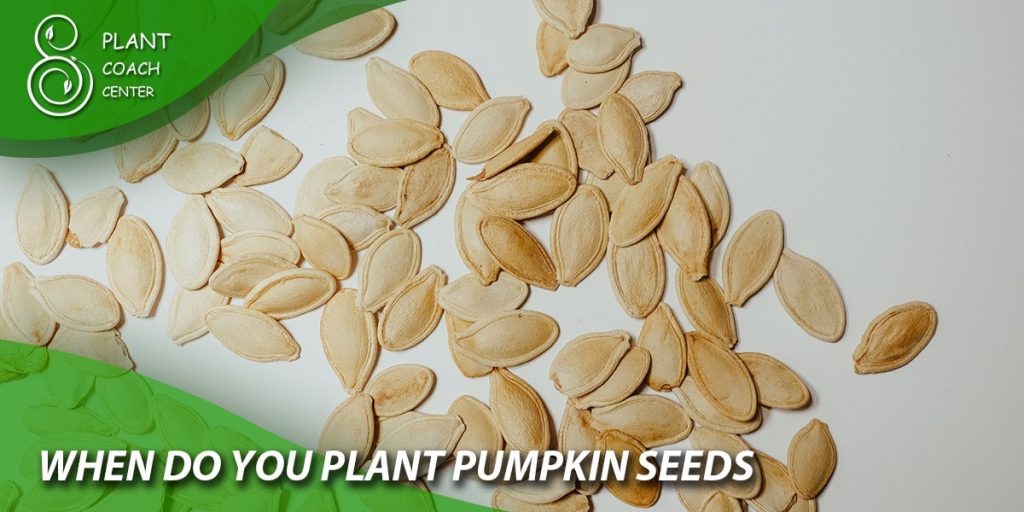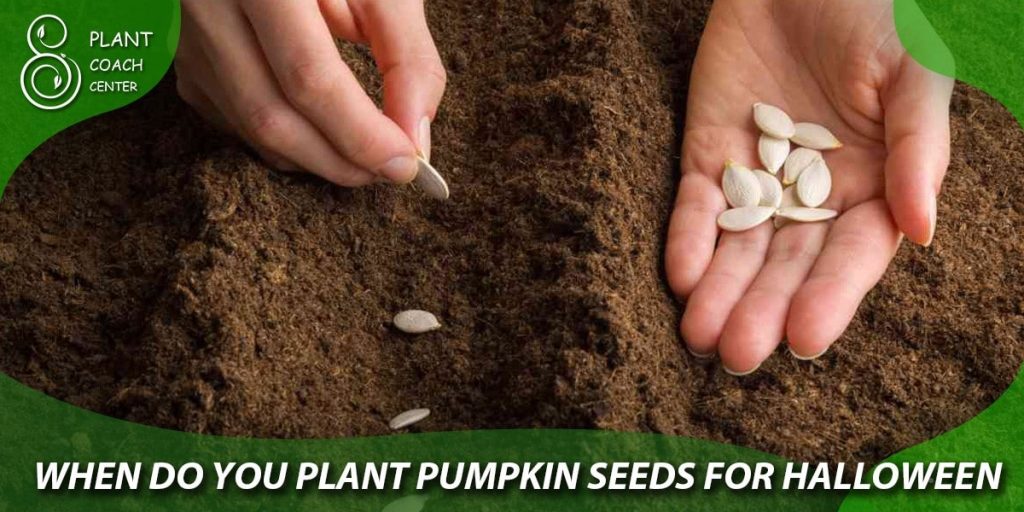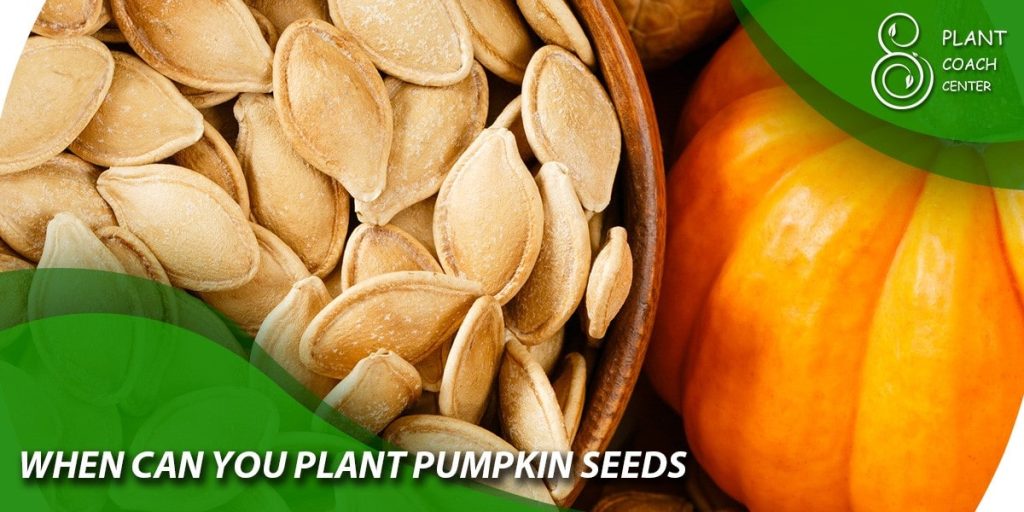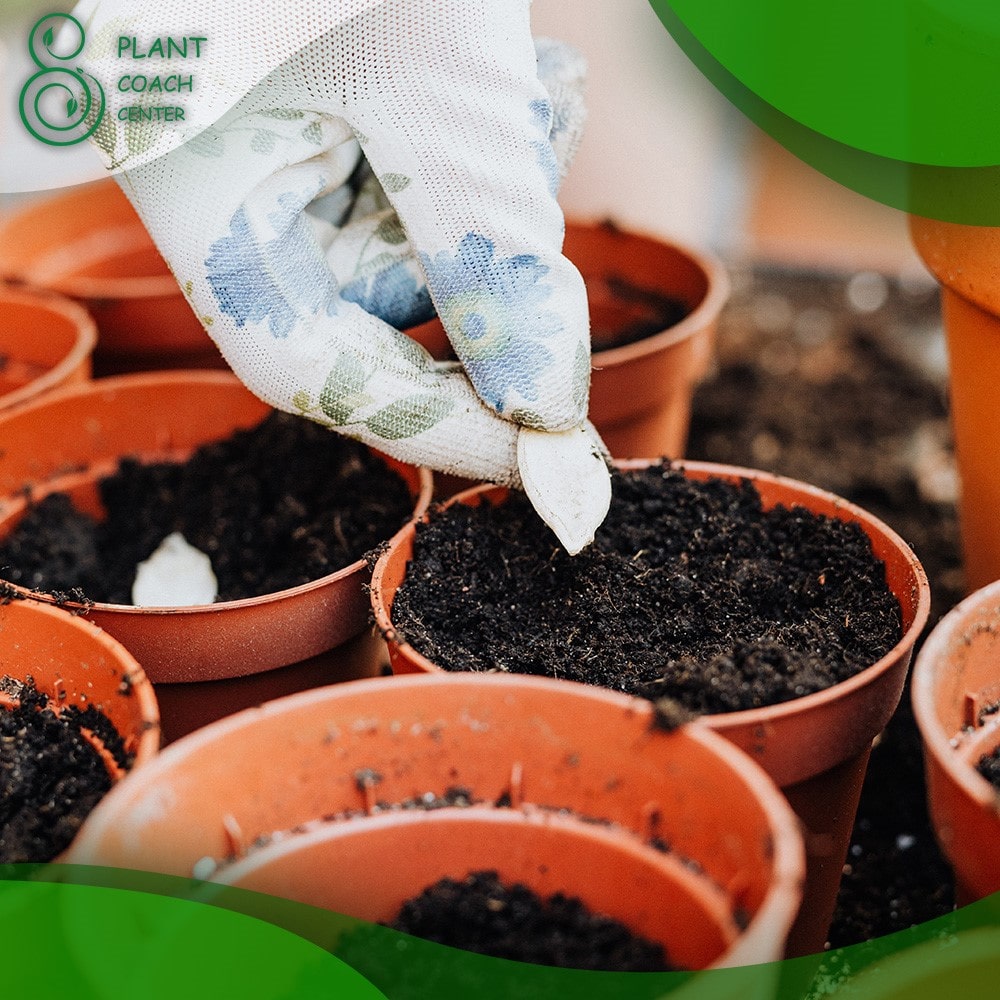When Do You Plant Pumpkin Seeds?

Are you eager to transform your garden into a vibrant canvas adorned with the rich hues of autumn? Look no further if you’re wondering when to embark on the delightful journey of growing your own pumpkins. The question, “When do you plant pumpkins?” opens the gateway to a world of seasonal magic and horticultural delight.
As the season’s dance and nature’s rhythms play out, choosing the perfect moment to sow your pumpkin seeds can significantly impact the success of your harvest. Whether you’re a seasoned gardener or a novice with a penchant for cultivating the extraordinary, timing holds the key to reaping plump, radiant pumpkins that adorn your doorstep come fall.
In this guide, we will delve into the art and science of pumpkin seed planting, unraveling the secrets behind the optimal timing for different climates, the nuances of soil readiness, and even the intriguing consideration of lunar phases. Prepare to unearth the mysteries of when and how to plant your pumpkin seeds, ensuring a bountiful and awe-inspiring autumnal spectacle.
Aligning with Seasons: Choosing the Perfect Timing
Gardening is an intricate dance with nature, and knowing when to start the rhythm can make all the difference, especially in pumpkin cultivation. The question “When do you plant pumpkins?” is pivotal, dictating the trajectory of your pumpkin patch’s journey.
The timing of pumpkin seed planting hinges on the seasons, and it’s a delicate balance that can yield abundant rewards if executed right.
In regions with distinct seasons, the timing for planting pumpkins is crucial. Spring is often the preferred season for many gardeners, as it provides a gentler transition from the cold of winter to the warmth of summer. When the last frost has bid adieu, and the soil begins to warm up, typically around late spring, it’s prime time to sow pumpkin seeds.
This ensures that the young seedlings encounter the optimal conditions for growth – not too chilly and not scorching either. However, early spring can be an enticing option if you reside in a milder climate, where winters aren’t as harsh and frosts are rare.
On the flip side, starting the pumpkin journey in late summer can be strategic for those in regions with hot summers. This allows the seeds to germinate indoors, avoiding the scorching heat and potential pest onslaught, and then transplanting the young plants outdoors once the harsh temperatures subside.
Fall enthusiasts seeking to extend the pumpkin season can also experiment with late spring plantings, as pumpkins are relatively quick growers once they find their rhythm. Remember, the timing isn’t just about the date, local weather conditions, and soil temperature. The goal is to offer your pumpkin seeds the best environment to sprout, flourish, and mature.
Weather and Soil Readiness: Gauging Optimal Conditions
The success of your pumpkin patch venture hinges on more than just the changing seasons; it’s about the delicate interplay between weather patterns and soil readiness. So, when do you plant pumpkins? To unravel this mystery, it’s essential to become attuned to your local climate’s nuances and the condition of your garden soil.
Pumpkins, like any other plants, have their preferences. They thrive when their seeds are sown in soil that has reached the optimal temperature for germination.
Generally, pumpkin seeds require soil temperatures around 60°F (15°C) or higher for reliable sprouting. Planting seeds too early, when the soil is still cold and damp, can lead to rot or slow germination, putting your pumpkin dreams at risk.
But don’t just rely on a thermometer – let the soil guide you. Before contemplating the question, “When do you plant pumpkins?” assess the soil’s texture and moisture content. It should be crumbly, not compacted, allowing young roots to navigate easily. The ground should also be well-draining, preventing waterlogging that could drown the seeds or young plants.
Timing matters not only for the start but also for the duration of the growing season. You’ll want your pumpkins to have ample time to mature before the first frost arrives. Research the average date of the first frost in your area and count backward to determine the best time for planting.
Intricately linked with soil readiness is weather observation. Watch the forecast, as unexpected cold snaps or heavy rainfall can thwart your pumpkin-growing endeavors. Raised beds or using protective covers can shield young seedlings from adverse weather conditions, giving them a better chance to establish themselves.
Gauging the optimal weather and soil conditions requires keen observation, research, and a touch of intuition. As you ponder the question, “When do you plant pumpkins?” remember that your garden is a living entity, responding to both the rhythms of nature and your nurturing care.

Weather and Soil Readiness: Gauging Optimal Conditions
When planting pumpkins, timing isn’t just about the seasons; it’s about understanding the dance between weather conditions and soil preparation. So, when do you plant pumpkins? To unlock this horticultural secret, you need to decode the optimal conditions for your local climate and the soil in your garden.
Pumpkin seeds promise future vines, leaves, and orange globes of goodness. However, they’re selective about their environment.
These seeds thrive when they’re sown into warm soil for germination. Generally, pumpkin seeds need soil temperatures of around 60°F (15°C) or higher to sprout reliably. Planting too early, when the soil is still cold and damp, can lead to slow growth or even seed rot, jeopardizing your pumpkin aspirations.
Beyond temperature, consider the soil’s texture and moisture content before addressing the question, “When do you plant pumpkins?” Ground that’s crumbly and well-draining provides the ideal medium for pumpkin growth. Compacted soil hinders root development, and excessive moisture can drown seeds or young plants.
Gauge the readiness of your ground by how it crumbles in your hand – too clumpy and wet means it’s not quite ready.
But timing is a dance with the entire growing season. Factor in the duration between planting and the first frost date in your area. Count backward to identify your optimal planting window.
And speaking of frost, stay vigilant with weather forecasts. Unexpected cold snaps can ambush your pumpkin patch. Employ protective measures like row covers to shield tender seedlings from unanticipated chills.
As you contemplate the question, “When do you plant pumpkins?” remember that your garden is a living entity influenced by natural rhythms and your dedicated care. You’re setting the stage for a thriving pumpkin spectacle by aligning weather wisdom with soil savvy.
Frost Awareness: Navigating the Risky Periods
In the delicate dance of planting pumpkins, understanding the perilous waltz with frost is crucial. When do you plant pumpkins? Timing, once again, takes center stage, as the threat of frost casts a shadow that can impact your pumpkin dreams.
Frost poses a significant danger to young pumpkin seedlings. The tender leaves, and stems are particularly susceptible to its icy touch, potentially leading to irreversible damage. Therefore, the key lies in timing your planting to avoid the grasp of frost.
The answer to “When do you plant pumpkins?” about frost hinges on your region’s climate and the average date of the last frost in your area. Generally, it’s wise to wait until the later expected frost date before transplanting seedlings or directly sowing seeds into the ground. However, extra caution doesn’t hurt – allowing a buffer of a week or two after the last frost can mitigate the risk even further.
Starting pumpkin seeds indoors can be a strategic move for those living in colder climates, where frost can rear its head unexpectedly, even in late spring. This shields the delicate seedlings from the outdoor frost until they’re heartier and more resilient.
To safeguard your pumpkins against frost’s stealthy advances, consider keeping protective measures like frost cloths or blankets on hand. These can be draped over young plants during chilly nights as a shield against the cold. Remember to remove them during the day to ensure proper ventilation and sunlight.

Indoor vs. Outdoor: Starting Seeds in Various Settings
The question of “When do you plant pumpkins?” revolves around timing and the stage of growth at which you decide to embark on your adventure. The choice between starting pumpkin seeds indoors or directly sowing them outdoors is pivotal, each approach offering its own advantages.
Starting Seeds Indoors
When considering the indoor route, timing becomes more flexible. You can start pumpkin seeds indoors a few weeks before the last expected frost. This allows your seeds to germinate and develop into sturdy seedlings in the controlled environment of your home.
As the danger of frost wanes and the soil outdoors warms up, these well-established seedlings can be transplanted, giving them a head start and higher chances of survival.
Direct Outdoor Sowing
On the other hand, sowing pumpkin seeds directly into the garden can be an appealing option for those with a more spontaneous gardening spirit. Once the soil temperature reaches around 60°F (15°C) and the threat of frost has passed, it’s time to embark on the outdoor pumpkin journey. This approach eliminates the transplanting step and lets the seeds grow in their natural environment.
Factors such as your region’s climate, available space, and personal gardening style come into play when making this decision. If your growing season is short, starting indoors might offer a better chance for your pumpkins to mature before the first frost. Indoor seed starting also allows you to control the early stages of growth more closely, providing protection against pests and harsh weather.
Moon Phases and Seed Planting: Fact or Myth?
Planting by the moon’s phases might seem like a relic of ancient folklore, but the question remains: When do you grow pumpkins if you’re considering lunar guidance? The notion that the moon’s cycles influence gardening has sparked debates for generations, with some steadfastly adhering to these practices and others dismissing them as mere myths.
Advocates of moon-phase gardening believe that the moon’s gravitational pull and position in the sky can impact plant growth. According to this theory, planting during specific lunar phases can lead to better germination rates, healthier plants, and higher yields. The four primary phases — new moon, first quarter, full moon, and last quarter — each hold different significance in this system.
For those considering the moon’s influence on pumpkin planting, here’s a basic breakdown:
New Moon: This phase is associated with root development. If you’re planting pumpkins to establish robust root systems, consider sowing during this time.
First Quarter: Advocates claim this is the best time for planting above-ground crops. Since pumpkins are primarily above-ground vines, this could be an opportune phase.
Full Moon: With enhanced growth, the complete moon phase might be suitable for planting if you aim for larger, lush pumpkins.
Last Quarter: This phase is believed to be ideal for pruning and weeding. Avoid planting during this time and focus on maintaining existing plants.
While some gardeners swear by moon-phase planting, others remain skeptical. Scientific evidence supporting the moon’s direct impact on plant growth is limited. Climate, soil conditions, and other practical factors arguably play more significant roles.

Extending the Harvest: Succession Planting Techniques
When pondering the question, “When do you plant pumpkins?” don’t just think of a single planting window – think of an entire season brimming with opportunities. Succession planting, a technique often associated with crops like lettuce or beans, can also be applied to pumpkins, extending your harvest and prolonging the joy of your pumpkin patch.
The traditional approach involves planting all your seeds at once, leading to a one-time harvest. However, succession planting breaks this pattern by staggering your plantings, resulting in a continuous supply of pumpkins throughout the growing season.
For pumpkins, this means that instead of planting all your seeds in a single go, you can sow a portion at the start of the growing season, then follow up with subsequent plantings every few weeks. The key is to time these successive plantings strategically based on your local climate and expected frost dates.
By embracing succession planting, you can enjoy a stream of ripe pumpkins ready for picking at different intervals. This approach extends your harvest and helps manage potential challenges like pests, diseases, and weather fluctuations. It also ensures a steady supply of pumpkins for various autumn festivities, from Halloween to Thanksgiving.
A word of caution: remember that pumpkins require ample time to mature, usually around 75 to 120 days from planting to harvest. So, when do you plant pumpkins for succession? It’s all about calculating backward, factoring in the pumpkin variety’s specific growing duration and the average date of the first frost in your region.

Conclusion
In the mesmerizing journey of pumpkin cultivation, the question “When do you plant pumpkins?” weaves an intricate tale of seasonal rhythms, weather wisdom, and nurturing care. As you tread this path, remember that the optimal timing isn’t a fixed date but a symphony of harmonizing factors – the seasons, soil conditions, frost awareness, and even the moon’s enigmatic sway.
Embracing methods like indoor vs. outdoor planting and the intriguing succession planting technique adds layers of artistry to your gardening endeavor. So whether you’re a moon-phase enthusiast or a skeptic, the answer to this question unfolds uniquely in your garden.
As you delve into the intricacies of planting pumpkins, let the lessons learned here guide you, not only for a fruitful harvest but for a holistic journey that connects you with nature’s cycles. As you navigate this rewarding pursuit, remember to explore more resources on pumpkin planting techniques, gardening insights, and nature’s wonders at PlantCouchCenter.com – your companion in all things green and growing.
When do you plant pumpkin seeds indoors?
Start indoors 2-4 weeks before the last frost, ensuring sturdy seedlings for transplant.
Can I plant pumpkin seeds in summer?
Early summer planting is feasible in warmer regions, while more excellent areas benefit from spring sowing.
How can I protect pumpkin seedlings from frost?
Shield with cloths or covers during cold nights; choose a site with good drainage to prevent frost damage.







